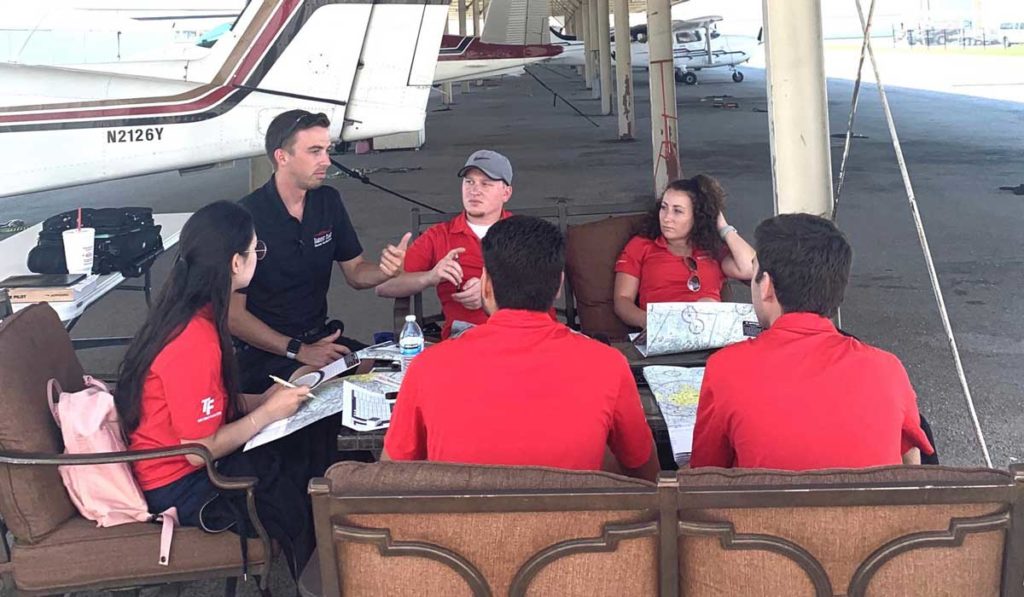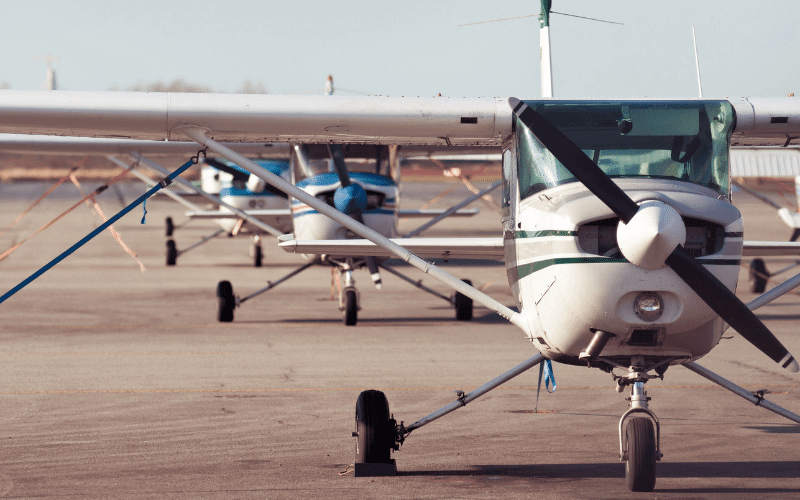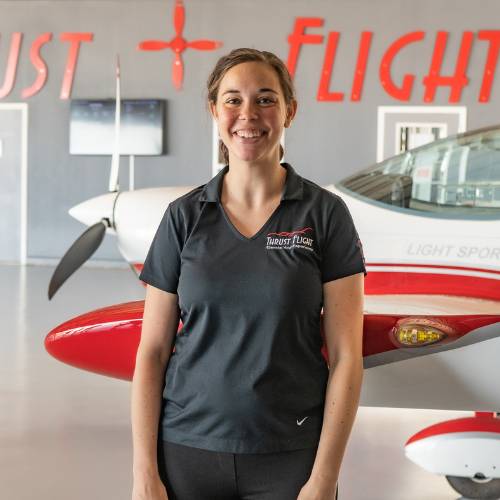Many instructors feel that their students would benefit from more focus on airmanship skills.
And while changes to the way we train have helped the problem, there are still many areas where students seem to fall short. Often when students have trouble progressing through a syllabus, it has more to do with airmanship than practical standards.
Every flight instructor is familiar with the building blocks approach to learning.
To master a complex skill, one needs to break the pieces down into manageable steps. Airmanship should be no different, yet many flight instructors feel that this personality trait needs to be nurtured rather than taught.
Here’s a look at some practical ways instructors can help their students focus on airmanship skills throughout training.
These go hand-in-hand with any training curriculum. Some of these are simple, like recognizing the importance of scanning for traffic instead of trusting avionics. Others are more complicated, aimed at making them better pilots all around.

What is Airmanship?
Airmanship is an esoteric term batted around by experienced aviators, but it gets cloudy when pressed for a simple definition that will make sense to students. It’s akin to the sailor’s “seamanship.”
The classic answer might have something to do with “stick-and-rudder” skills.
An aviator with superb airmanship skills can fly the heck out of a plane with perfect rudder usage, greasing tough landings, and nailing power-off accuracy approaches.
But dig deeper because airmanship encompasses so much more.
Instructors will recognize that the skills listed above are easily teachable. However, the other half of the equation is much more difficult.
Airmanship requires these skills to be combined with command authority—the ability to manage resources and make sound decisions in situations of pressure.
It would be remiss not to mention the modern epitome of airmanship—Captain Chesley Sullenberger of US Airways Flight 1549 fame. Captain “Sully” faced a double engine failure shortly after takeoff in the most congested airspace in the world. Yet, he answered the challenge with calm professionalism, a perfect dead-stick water landing, and not one major injury out of 155 people on board his Airbus. That is exemplary airmanship.
Tips to Improve a Student’s Airmanship
Be the Pilot You Want Them to Be
Great flight instructors teach by example. The best way to ensure that your students spend enough time looking out of the cockpit, using the rudder, or religiously using checklists is to do those things yourself.
Look for Bad Habits Early On
Many students say they come to the flight school with empty logbooks, but they have plenty of experience. The problem is, this is usually unsupervised experience—the kind they self-taught on their flight simulators.
A passion for aviation is the first step in making a great pilot.
But flight simulators can make it hard to look at anything other than the instrument panel, and so that’s how people fly them. It’s not so much about the fact that you can’t look around easily—it just normalizes the idea that you can’t move your head.
Translating the looking-straight-ahead into a swiveling head that is actively looking for other airplanes takes some time. It also takes time to work on the seat-of-the-pants flying that no home flight simulator can provide.

Cover the Instruments
Ask any flight instructor to list the top mistakes they see student pilots making, and one of the top answers is usually staring inside the cockpit too much.
Head-down time is dangerous. All pilots, VFR and IFR when not in the soup, are responsible for seeing and avoiding other air traffic. It’s a foundational skill in the safety of the national air space system.
Covering the instruments is a good trick if you have a student who seems to insist that they need an attitude indicator to fly. Show your student how little they need by covering everything up.
All a VFR pilot should need, after all, is an airspeed indicator, an altimeter, and the tachometer. And if you want to make a point, do you really need those?
Chair Flying and Cockpit Familiarization Training
If the problem is too much head-down time, there are two causes. Either the student does not realize how vital it is to look outside, or they cannot get what they need to be done inside the cockpit in a reasonable time.
If the problem is familiarization, spend some time chair flying maneuvers and working in ground trainers. Make sure they know where things are and how to use them before taking off.
Careful Use of FTD and Simulator Training
Simulators are powerful tools to help students realize how to operate the plane and know where things are and how to use them. But they aren’t great at helping with the stick-and-rudder fundamentals of airmanship.
Many flight schools use FTDs and ATDs (types of simulators) heavily with new students to help familiarize them with basic maneuvers and flying.
This is a great idea and can indeed save students thousands of dollars. But it’s essential to ensure that bad habits are not formed in the simulator.
You’ve got to make sure they still know to clear the blind spots for traffic and can feel the basics of rudder control and attitude flying. Keep scenarios in the FTD as realistic as possible, and ensure that they reinforce the airmanship skills you want your students to demonstrate in the real plane.

Don’t Allow Reliance on Cockpit Technology
Modern cockpits are filled with remarkable technologies. There are weather radar displays, terrain awareness maps, and even traffic alerts.
But all of these have limitations that students need to know about and understand. They need to realize that these technologies aid their situational awareness, but they are not all they need.
The problem with all of these technologies is that they seem to provide the pilot with a complete picture when it is anything but.
A student cannot be expected to understand that there could be more planes out there than their traffic display is showing.
Likewise, they don’t understand the differences a 20 minutes delay on a NEXRAD image can make.
Make Sure Students Check ATC
Long before we had these technologies on our MFDs, student pilots had the same problem.
But back then, pilots put too much faith in what they heard on the radio. Listening to what is happening on the radio is an incredible tool to help a pilot’s situational awareness.
But it too has limits.
Whether it was what the controllers said or what other pilots said during self-announcements at uncontrolled fields, everything should be taken with a grain of salt. Mistakes are made, and sometimes calls are missed. At uncontrolled fields, there are plenty of planes with no radios onboard.
When students go on their first few solo flights you should also listen in using a handheld aviation radio so you can hear them talk to ATC when you aren’t on board.
Watch Those Blind Spots
You don’t know what you don’t know. Students have no idea what they can’t see, and the concept of how much sky they can’t see is foreign to them.
Remember when you’re first teaching your students that they need to be pointed out to clear for turns and look for traffic.
Clearing turns are too often left for the practice area as a formality when in reality, it’s a crucial part of every flight. A pilot’s head should be on a swivel, constantly moving around and looking for the plane that they can’t quite see.

Conclusion
It may seem odd, especially to new instructors, but the little habits make the pilot. So an instructor’s time is often spent on the small stuff, especially at the beginning of pilot training.
Airmanship is all about consistency.
It’s constantly working on one’s situational awareness, constantly improving one’s landings, and constantly looking for traffic on every flight.
It’s those fundamental building blocks that will help students progress through their training successfully.
And it’s those skills that will carry them through their entire careers.
- About the Author
- Latest Posts
Liz Brassaw is a first officer for a regional airline and the former Chief Pilot and Chief Flight Operations Officer for Thrust Flight. She holds an ATP, CFI, CFII, MEI, AMEL, ASES with over 2,500 hours of flight instruction given. She earned her Bachelor of Science degree from the Utah Valley University School of Aviation Sciences. She’s passionate about flying and enjoys instilling that love in the instructors on her team and the new students she trains.


